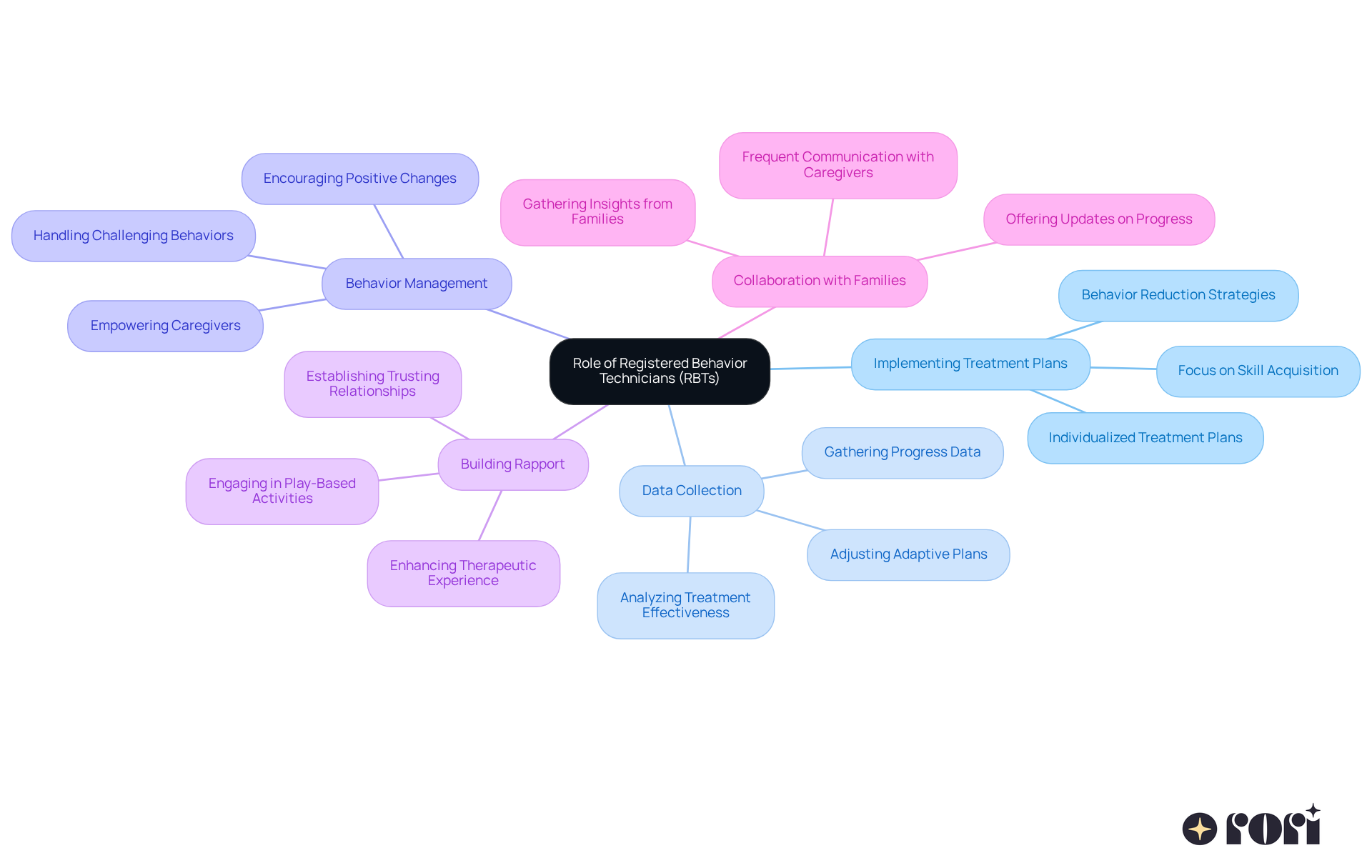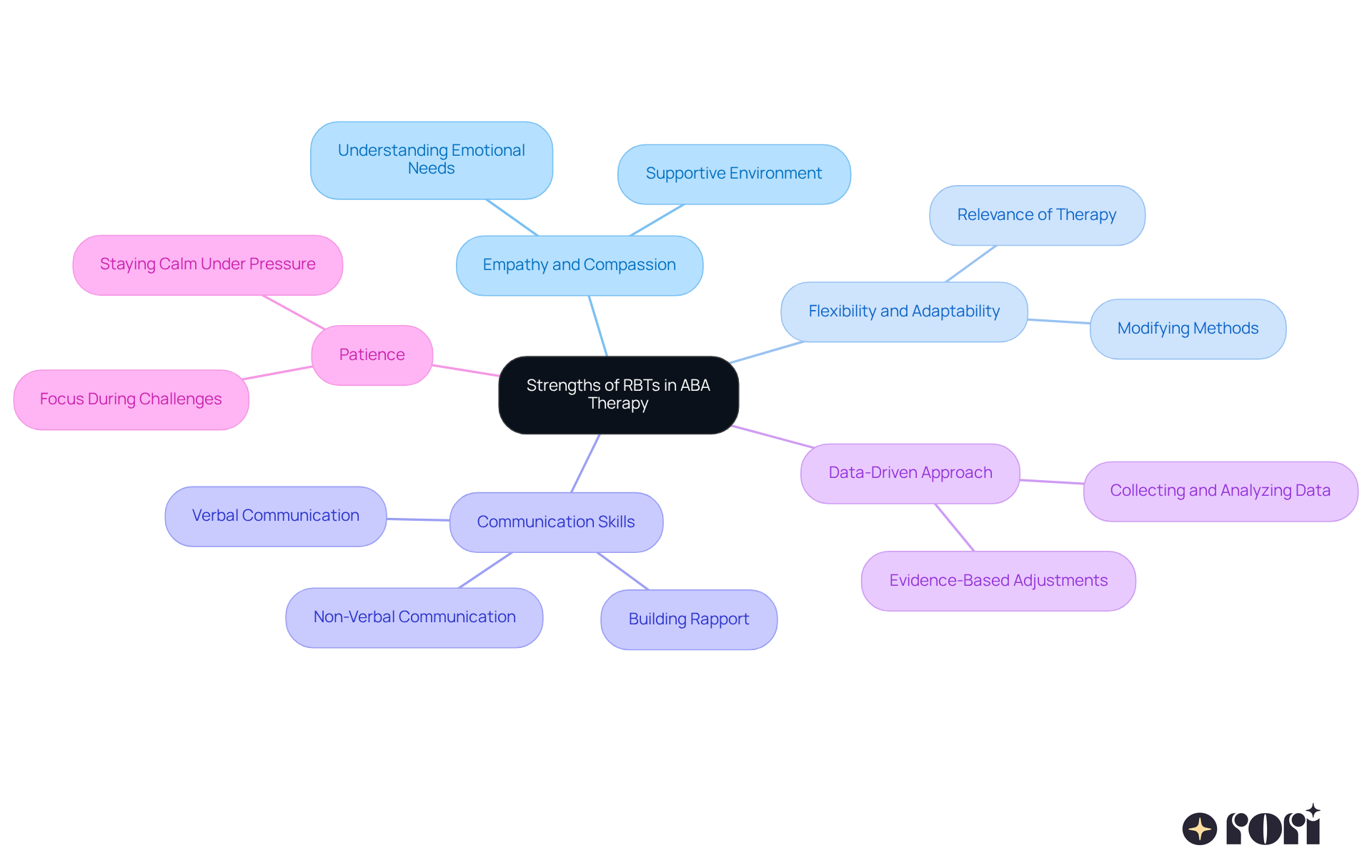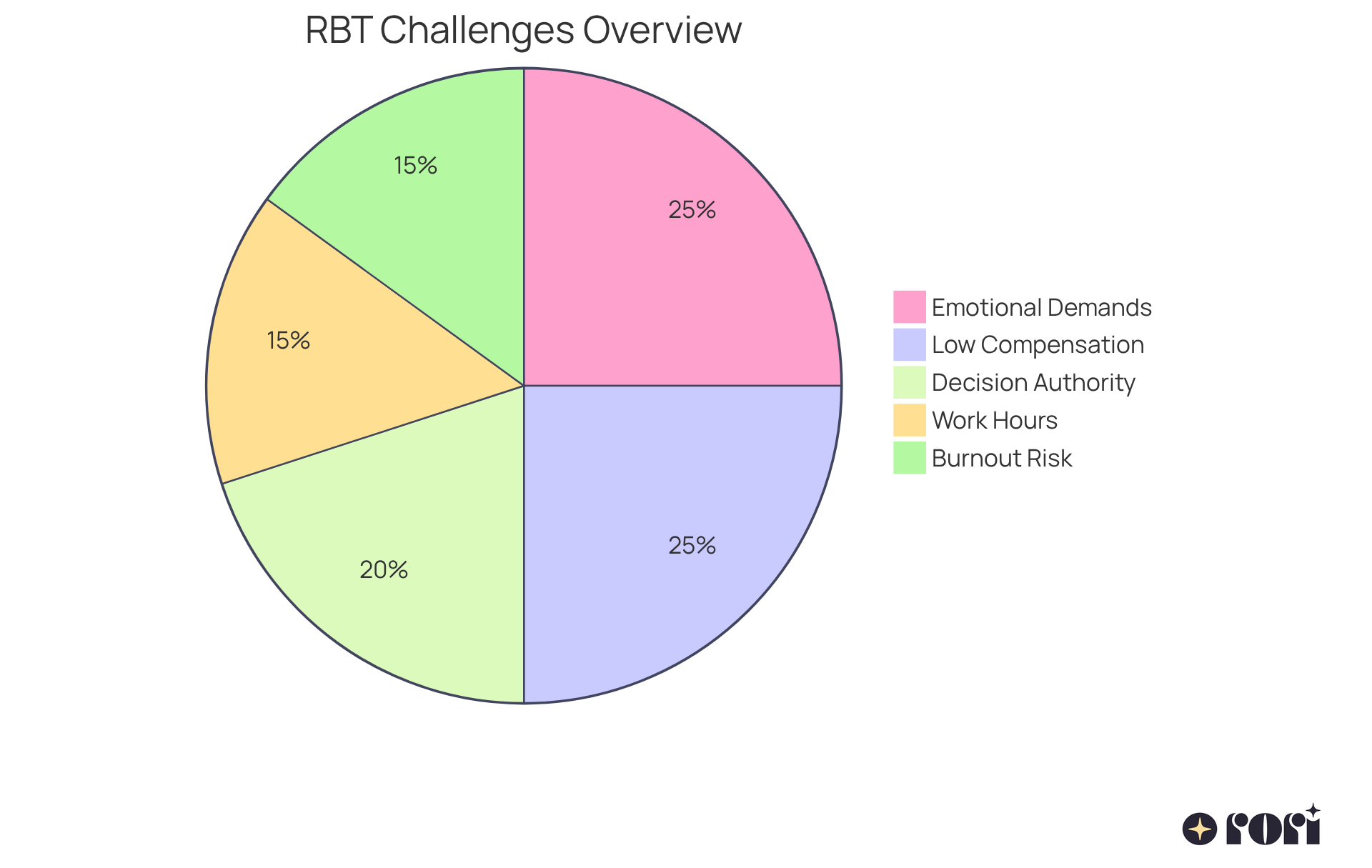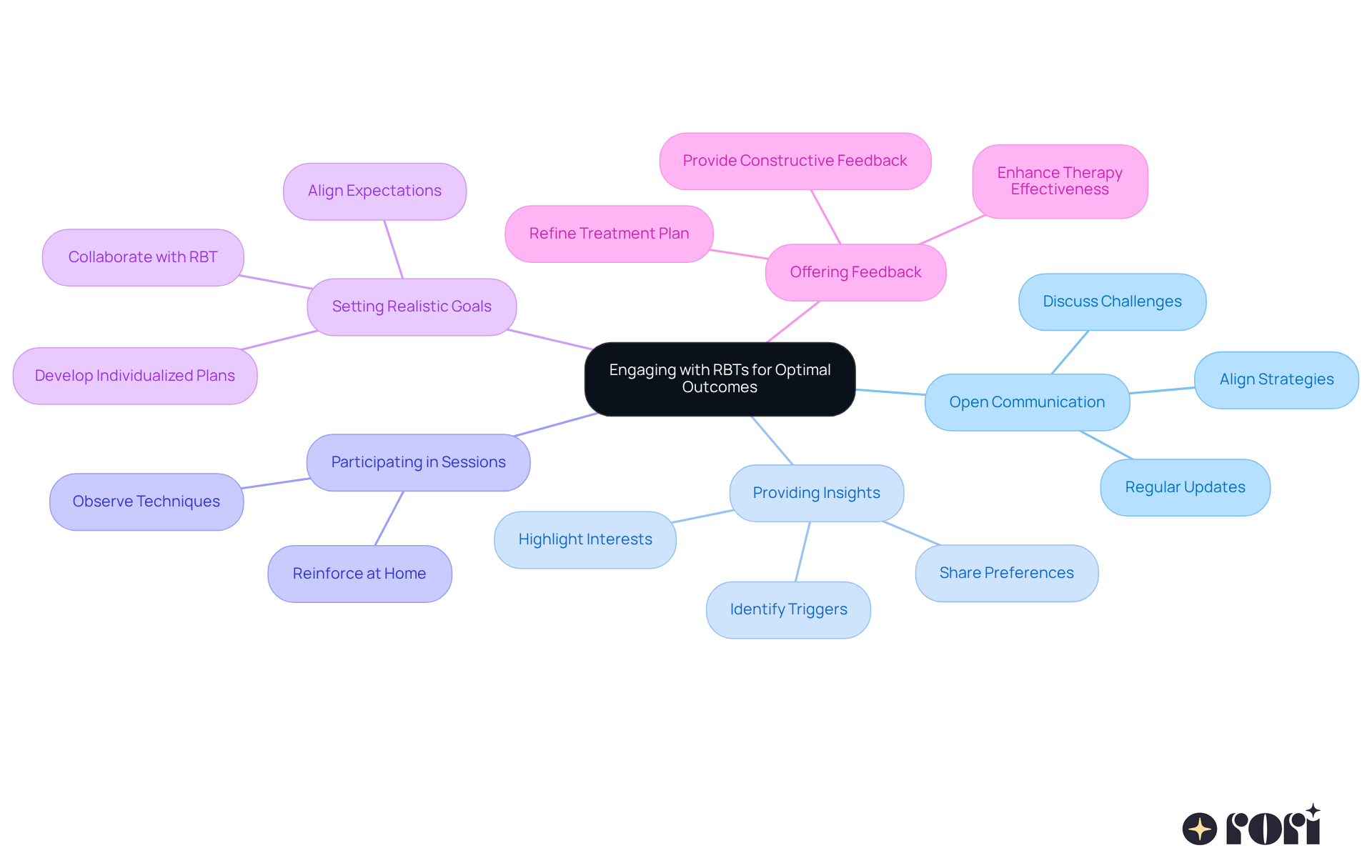This article delves into the strengths and weaknesses of Registered Behavior Technicians (RBTs) as they provide care for children, especially those with autism. RBTs shine in areas like:
However, they also face challenges—think:
These factors can really impact their effectiveness in therapy.
Let’s explore this together! Understanding these dynamics can help parents navigate their child’s care more effectively. By recognizing both the strengths and challenges of RBTs, we can better appreciate the support they provide. It’s all about finding the right balance and ensuring that our children receive the best care possible.
Understanding the multifaceted role of Registered Behavior Technicians (RBTs) is essential for parents navigating the complexities of applied behavior analysis (ABA) therapy for their children. These dedicated professionals not only implement individualized treatment plans but also build connections that can profoundly influence a child's development. 🌟
However, alongside their strengths, RBTs encounter unique challenges that may impact the quality of care provided. So, how can parents leverage the strengths of RBTs while being mindful of their limitations to ensure the best outcomes for their children? Let’s explore this together!
Registered Behavior Technicians (RBTs) are here to support you and your child on their journey. These paraprofessionals apply applied behavior analysis methods under the guidance of a Board Certified Analyst (BCBA). Let’s take a closer look at what they do!
Implementing Treatment Plans: RBTs carry out individualized treatment plans designed by BCBAs. They focus on skill acquisition and behavior reduction tailored to each child's unique needs. This patient-focused approach ensures that treatment evolves with your child's development and caregiver involvement. It truly reflects the empathetic nature of services at Rori Care!
Data Collection: Gathering and analyzing data on your child’s progress is crucial. This step helps in assessing how effective the treatment is and making necessary adjustments to the adaptive plans. With a data-driven approach, we can confidently support the effectiveness of ABA interventions for autism treatment.
Behavior Management: RBTs are trained to handle challenging behaviors and apply strategies that encourage positive changes. They empower caregivers with ABA principles, helping you support your child's behavioral goals effectively.
Building Rapport: Establishing a trusting relationship with your child is vital for effective treatment. RBTs often engage in play-based activities to foster this connection, enhancing the overall therapeutic experience. It’s all about creating that special bond!
Collaboration with Families: RBTs connect frequently with parents and caregivers, offering updates and gathering insights that can enrich the treatment process. This partnership ensures that families receive the support they need throughout their journey with Rori Care. Together, we equip caregivers with the knowledge and strategies essential for their child’s success.
We’re here to help you every step of the way! If you have any questions or thoughts, feel free to share. Let’s explore this together!

RBTs bring several strengths to the table that really enhance the effectiveness of ABA therapy:
Empathy and Compassion: RBTs have a wonderful knack for understanding the emotional and developmental needs of children with autism. This creates a supportive environment where kids can thrive. Just look at Rori Care's clinical leadership group—they truly exemplify dedication to neurodiversity and youth success, ensuring that behavior technicians are all set to provide the finest care.
Flexibility and Adaptability: These professionals showcase their RBT strengths and weaknesses by modifying their methods based on how each child responds. This ensures that therapy remains relevant and effective, which is so important!
RBT strengths and weaknesses: One of the strengths of Registered Behavior Technicians is their ability to excel in both verbal and non-verbal communication. This skill is key for building rapport with young individuals and working closely with families, making everyone feel included in the process.
Data-Driven Approach: Their commitment to collecting and analyzing data enables them to evaluate RBT strengths and weaknesses, allowing for evidence-based adjustments to treatment plans and ensuring continuous improvement. This focus on data is crucial, especially as they gear up for the board examination that tests their proficiency in the RBT Task List.
Working with children with autism highlights the RBT strengths and weaknesses, as it requires a good dose of patience, and Registered Behavior Technicians are trained to stay calm and focused, even when things get tough.
Let’s explore this together! Every step of the way, we’re here to help you navigate your journey.

While RBT strengths and weaknesses contribute to their roles, they also encounter specific challenges that can affect their effectiveness.
Integrating AI-driven progress report automation can help alleviate some of these challenges. By decreasing the time behavior technicians spend on report writing, they can concentrate more on direct care, potentially enhancing job satisfaction and lowering burnout. Let’s explore this together!

To maximize the benefits of ABA therapy, parents can engage effectively with RBTs by:
Establishing Open Communication: It's so important to regularly chat with your RBT about your child's progress, challenges, and any changes in behavior. This way, everyone stays on the same page! Open communication helps align strategies and ensures that the intervention is tailored to your child's unique needs.
Providing Insights: Sharing relevant information about your little one’s preferences, triggers, and interests is key. This helps the RBT customize their approach, creating a consistent and supportive environment that really maximizes the impact of the intervention.
Participating in Sessions: Whenever you can, try to observe therapy sessions. This gives you a chance to see the techniques in action and understand how to reinforce them at home. Engaging in this way allows you to apply ABA principles effectively in your daily interactions.
Setting Realistic Goals: Work together with the RBT to set achievable objectives for your child. This collaboration is essential for developing individualized plans that promote behavior change and skill acquisition while taking into account RBT strengths and weaknesses, ensuring that expectations align with their capabilities.
Offering Feedback: Don't hesitate to provide constructive feedback to the RBT about what works well and what doesn’t. This fosters a collaborative environment that benefits your child. Your insights can help refine the treatment plan based on progress reports and enhance the overall effectiveness of the therapy.
Let’s explore this together! Your involvement is invaluable, and we’re here to help you every step of the way!

Understanding the strengths and weaknesses of Registered Behavior Technicians (RBTs) is crucial for optimizing your child's care and therapeutic outcomes. RBTs play a vital role in applied behavior analysis (ABA) therapy, implementing individualized treatment plans, collecting data, and fostering collaborative relationships with families. Their ability to adapt to each child's unique needs while managing challenging behaviors really highlights their importance in supporting children with autism.
Throughout this journey, we’ve highlighted key insights, including the empathetic and data-driven approach of RBTs that makes therapy more effective. However, it’s important to recognize the challenges they face, like emotional demands and limited decision-making authority, which can impact their performance. By understanding both the strengths and weaknesses of RBTs, you can engage more effectively in the therapeutic process, ensuring strategies are tailored to your child's specific requirements.
Ultimately, active participation and open communication with RBTs are essential for maximizing the benefits of ABA therapy. Families are encouraged to share insights, set realistic goals, and provide feedback to create a collaborative environment. Embracing these practices not only enhances the therapeutic experience but also empowers you to support your child's development effectively. Let’s explore this together, and remember, we’re here to help you every step of the way!
What is the role of Registered Behavior Technicians (RBTs)?
RBTs support children and their families by implementing individualized treatment plans designed by Board Certified Analysts (BCBAs) using applied behavior analysis methods.
How do RBTs implement treatment plans?
RBTs carry out treatment plans focused on skill acquisition and behavior reduction, tailored to each child's unique needs, ensuring that the treatment evolves with the child's development and caregiver involvement.
Why is data collection important for RBTs?
Data collection is crucial for assessing the effectiveness of treatment and making necessary adjustments to adaptive plans, supporting the effectiveness of ABA interventions for autism treatment.
How do RBTs manage challenging behaviors?
RBTs are trained to handle challenging behaviors and apply strategies that encourage positive changes, empowering caregivers with ABA principles to support their child's behavioral goals effectively.
How do RBTs build rapport with children?
RBTs establish a trusting relationship with children through play-based activities, which enhances the overall therapeutic experience and fosters a special bond.
What is the importance of collaboration with families for RBTs?
RBTs frequently connect with parents and caregivers to provide updates and gather insights, ensuring families receive the support they need throughout their journey and equipping them with essential knowledge and strategies for their child's success.